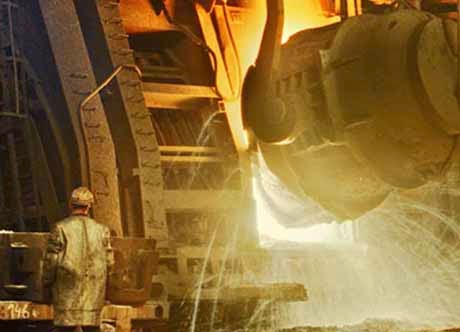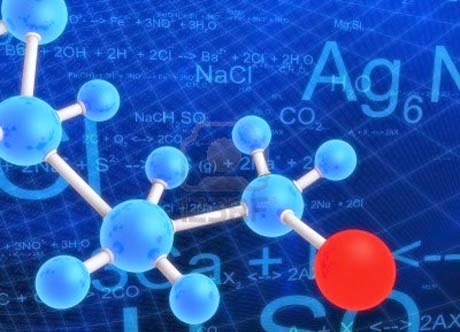By Frank Rovella
When it comes to power generation, many people take for
granted that our entire way of life depends on it. Every industry, every
business, every home relies on electricity to survive. Fluctuations in the
price of natural gas and coal can make or break entire economies. Recent
advancements in fracking and deepwater drilling have introduced new and
unprecedented volatility into the energy industry. While it has breathed new
life into natural gas (NG) based power generation, it has also driven old king
coal into a supporting role. As the
chart below indicates, NG and coal are projected to be neck and neck at around
33% each with the remaining third split between nuclear, hydro, and renewables.

However, through all this nuclear power has remained
relatively stable. This is due in part to the cost of the technology and the
fear factor, which is part and parcel to the U.S. Nuclear Regulatory
Commission's (NRC) heavy-handed regulatory arm. With accidents like Fukushima,
Chernobyl, and Three Mile Island still fresh in the public consciousness, it's
hard to argue for less regulation; in fact, the NRC has only approved one new
plant in the last 35 years.
Homer Simpson stereotypes aside, there is a reason the US
hasn't had a nuclear accident in over 36 years (Three Mile Island). Because of
the NRC, American nuclear plants run with military precision, the level of
redundancies and safety features make them incredibly safe but painfully
expensive to build and operate.
"Nuclear power is one of the cleanest forms of power generation,
but current technology requires regulation that makes it prohibitively
expensive."
As with any major power generation technology, the objective
is to make heat, to make steam, to turn a turbine. Unlike other conventional
fossil fuel forms of generation, in a nuclear reactor there is no combustion,
whether it's a pressurized water reactor or a boiling water reactor, also known
as a light water reactor, the heat is generated from a fission reaction.
Fission is generated through the use of enriched uranium, the mining and
enriching of which is a complex and very expensive process. Additionally, refueling is also very expensive and disruptive
to power operations. There are currently 42 or so nuclear plants in the USA
averaging around 1900 megawatts each, most with two reactors. The typical
reactor is on an 18 to 24-month cycle, with outages lasting over a month and
requiring thousands of contracted workers. This cost becomes compounded with
the revenue lost by losing half of a plant's output for over a month. These
power plants provide baseload power; lost production has to come from other
sources and is usually purchased from nearby states or utilities.
Apart from the cost and complexity of operation, the public
perception of nuclear plants being dangerous has greatly hindered expansion.
When you look at worst-case scenarios like Chernobyl, it's not hard not to have
at least some trepidation towards the technology.
Of course, the NRC has assured us that an accident of that
magnitude could not happen in the US, but even with the best safety record, there is still a risk. Fukushima, for example, was said to be designed to
withstand the seismic conditions of the region but failed brilliantly when
faced with them. The Fukushima accident
seemed to be the final nail in the coffin of the nuclear industry. The
combination of cost and bad press, pretty much shut down any hope of new plants
coming online.
"The problem with solid fuel nuclear technology is the
fact that every reactor has the potential to meltdown."
Even with all of these drawbacks, nuclear power is still
getting a lot of R&D dollars. The demand for clean non-fossil fuel energy
is growing. Even without the green groundswell, developing new and cleaner
nuclear technology is imperative because the global energy demand is far
outstripping production. A recent report by the International Energy Agency(IEA) indicated that currently, 20% of the world population does not have access
to electricity that is 1.4 billion people. And with overall demand expected to
rise 93% over the next 25 years, every option must be explored.
Fortunately, there is a slew of next-generation nuclear
technology in the pipeline that may change the industry's fortunes. There are
currently almost 50 firms in North America developing new technology for the
nuclear industry; this represents over $1.3 billion in investment capital.
That's big money for any new technology, and it's all coming from individual
investors, major venture capital funds, and even people like Bill Gates.
This resurgence is focused around two reactor types that
hold a great deal of promise; they are molten salt and traveling wave. Both
types have been around since the 1950s but have taken a back seat to current
reactor design. What is really important to understand these new
technologies is that they are both meltdown proof.
Molten Salt Reactors (MSR) include a number of reactor
types. However, Liquid Fluoride Thorium Reactors (LFTR), are currently getting
the most attention. The advantage that
MSRs like LFTR offer is that unlike standard reactors that use solid fuel, MSRs
use liquid fuel in the form of molten salts such as fluoride or chloride
salts that contain dissolved fissile material, these fluids also facilitate
cooling. Unlike standard solid fuel reactors, refueling does not
require shutting down the plant. Also, using a liquid fuel means that there are
no fuel assemblies to be built; this includes the fuel pellets, core support
structure, cladding tubes, and a lot of other very expensive components and hardware.
However there are also disadvantages, MSRs also have the potential to provide
weapons-grade uranium and because of the use of high-temperature salts, there
is a concern with corrosion. Maintenance is also difficult because of the high
levels of radiation throughout the fluid system. Additionally, in the case of a lengthy shut
down, many parts of the systems will require heating so that the salts do not
solidify. As the diagram indicates, the MSR liquid system is extensive, and
though safer and more efficient than solid fuel reactors, construction costs
would likely be very high for large-scale plants.

Traveling Wave Reactors (TWR) seem more like science
fiction. If this technology is fully developed it will certainly change the way
nuclear power is perceived and used. A
traveling wave reactor needs only a very small amount of enriched uranium 235
to operate, this is where it gets interesting; during normal core operations, additional fuel is slowly created from depleted uranium. It has been theorized
that a traveling wave reactor could run for several hundred years or more
between refueling, however, realistically speaking scheduled maintenance would
more likely be in the 40-year range. With the minimal need for enriched fuel,
virtually no refueling, no waste to dispose of, and no potential for
weaponization, TWRs could make Ralph Nader blush. As the image below
highlights, the design consists of six major components.
- The Reactor Head is the only above-ground component and acts
as a safety containment structure in case radiation is released.
- Below the reactor head is the Guard Vessel, which holds the
reactor core that is submerged in liquid sodium. The liquid sodium provides
both heat transfer and reactor cooling.
- As with any reactor, the core is at the heart of the unit
and is where nonfissile materials convert to fissile materials to maintain the
reaction.
- Since the reaction process is very slow, Control Rods are
used to accelerate the reaction, while Safety Rods are used to slow the
reaction; both are mechanically inserted into the core when required.
- Pumps are used to move the 550°C/1022°F liquid sodium
through the core and to heat liquid sodium in a secondary circulation system.
- The Secondary Circulation System flows through a heat
exchanger that in turn creates steam to turn turbines to generate power.
Both of these technologies hold great promise and can solve
or play a major role in the growing worldwide demand for electricity. However,
they will have to overcome the negative public opinion that solid fuel reactor
technology has created.
The increase in development activity around these and other
reactor designs have prompted The Department of Energy (DOE) to enact a program
designed to help fledgling companies to finance and proliferate new and safer
reactor design. One such program called "GAIN" gives developers
access to DOE labs and includes $12.5 billion for loan guarantees that will
help with NRC licensing and certification.
The loan guarantees will certainly help, but it's only a
band-aid for the cumbersome NRC licensing and certification process. There is
certainly radiation involved in each design, but apart from that this
technology has very little in common with solid-fuel technology.
The whole point of these new designs is that they don't
suffer from the same potential for catastrophic failure, waste disposal, and
massive costs.
Unless the NRC changes its tune, the current decade long and
painfully expensive approval process will decimate the funding and momentum of
most startups. This is a perfect example of regulation hindering innovation that would provide global benefits.
More Info:
Traveling Wave Reactors (TWR)
https://whatisnuclear.com/reactors/twr.html
http://terrapower.com/pages/technology
Molten Salt Reactors
http://www.world-nuclear.org/info/Current-and-Future-Generation/Molten-Salt-Reactors/

























